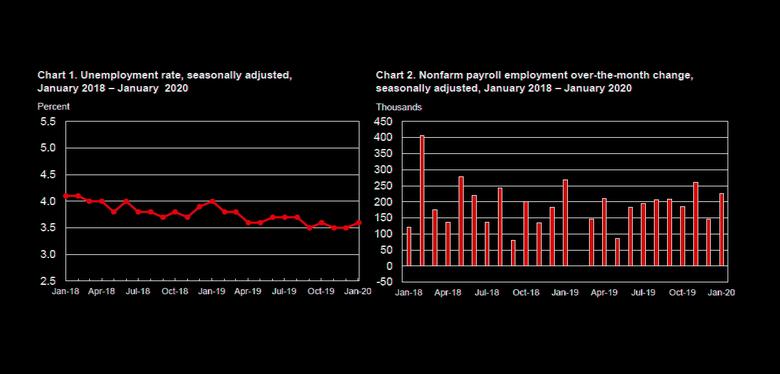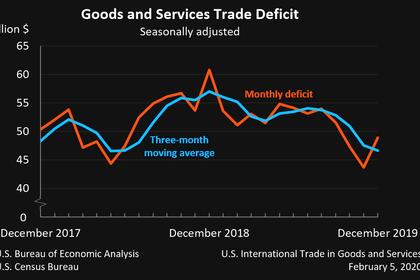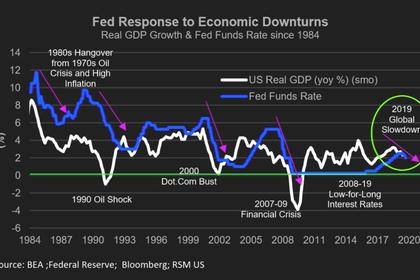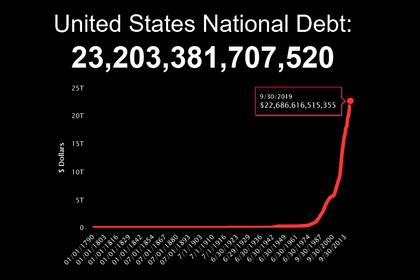
U.S. UNEMPLOYMENT NEAR 3.6%

U.S. BLS - Friday, February 7, 2020 - THE EMPLOYMENT SITUATION -- JANUARY 2020
Total nonfarm payroll employment rose by 225,000 in January, and the unemployment rate was little changed at 3.6 percent, the U.S. Bureau of Labor Statistics reported today. Notable job gains occurred in construction, in health care, and in transportation and warehousing.
This news release presents statistics from two monthly surveys. The household survey measures labor force status, including unemployment, by demographic characteristics. The establishment survey measures nonfarm employment, hours, and earnings by industry. For more information about the concepts and statistical methodology used in these two surveys, see the Technical Note.
Household Survey Data
Both the unemployment rate, at 3.6 percent, and the number of unemployed persons, at 5.9 million, changed little in January. (See table A-1. For information about annual population adjustments to the household survey estimates, see the note at the end of the news release and tables B and C.)
Among the major worker groups, the unemployment rates for adult men (3.3 percent), adult women (3.2 percent), teenagers (12.2 percent), Whites (3.1 percent), Blacks (6.0 percent), Asians (3.0 percent), and Hispanics (4.3 percent) showed little or no change over the month. (See tables A-1, A-2, and A-3.)
Among the unemployed, the number of reentrants to the labor force increased by 183,000 in January to 1.8 million but was little changed over the year. (Reentrants are persons who previously worked but were not in the labor force prior to beginning their job search.) (See table A-11.)
The number of long-term unemployed (those jobless for 27 weeks or more), at 1.2 million, was unchanged in January. These individuals accounted for 19.9 percent of the unemployed. (See table A-12.)
After accounting for the annual adjustments to the population controls, the civilian labor force rose by 574,000 in January, and the labor force participation rate edged up by 0.2 percentage point to 63.4 percent. The employment-population ratio, at 61.2 percent, changed little over the month but was up by 0.5 percentage point over the year. (See table A-1. For additional information about the effects of the population adjustments, see table C.)
The number of persons employed part time for economic reasons, at 4.2 million, was essentially unchanged in January. These individuals, who would have preferred full-time employment, were working part time because their hours had been reduced or they were unable to find full-time jobs. (See table A-8.)
The number of persons marginally attached to the labor force, at 1.3 million, changed little in January. These individuals were not in the labor force, wanted and were available for work, and had looked for a job sometime in the prior 12 months. They were not counted as unemployed because they had not searched for work in the 4 weeks preceding the survey for a variety of reasons, such as belief that no jobs are available for them (referred to as discouraged workers), school attendance, or family responsibilities. Discouraged workers numbered 337,000 in January, little changed over the month. (See Summary table A.)
Establishment Survey Data
Total nonfarm payroll employment increased by 225,000 in January, compared with an average monthly gain of 175,000 in 2019. Notable job gains occurred in construction, in health care, and in transportation and warehousing. (See table B-1. For information about the annual benchmark process, see the note at the end of the news release and table A.)
In January, construction employment rose by 44,000. Most of the gain occurred in specialty trade contractors, with increases in both the residential (+18,000) and nonresidential (+17,000) components. Construction added an average of 12,000 jobs per month in 2019.
Health care added 36,000 jobs in January, with gains in ambulatory health care services (+23,000) and hospitals (+10,000). Health care has added 361,000 jobs over the past 12 months.
Employment in transportation and warehousing increased by 28,000 in January. Job gains occurred in couriers and messengers (+14,000) and in warehousing and storage (+6,000).
Over the year, employment in transportation and warehousing has increased by 106,000. Employment in leisure and hospitality continued to trend up in January (+36,000). Over the past 6 months, the industry has added 288,000 jobs.
Employment continued on an upward trend in professional and business services in January (+21,000), increasing by 390,000 over the past 12 months.
Manufacturing employment changed little in January (-12,000) and has shown little movement, on net, over the past 12 months. Motor vehicles and parts lost 11,000 jobs over the month.
Employment in other major industries, including mining, wholesale trade, retail trade, information, financial activities, and government, changed little over the month.
In January, average hourly earnings for all employees on private nonfarm payrolls rose by 7 cents to $28.44. Over the past 12 months, average hourly earnings have increased by 3.1 percent. Average hourly earnings of private-sector production and nonsupervisory employees were $23.87 in January, little changed over the month (+3 cents). (See tables B-3 and B-8.)
The average workweek for all employees on private nonfarm payrolls was unchanged at 34.3 hours in January. In manufacturing, the average workweek remained at 40.4 hours, while overtime edged down 0.1 hour to 3.1 hours. The average workweek of private-sector production and nonsupervisory employees edged up by 0.1 hour to 33.6 hours. (See tables B-2 and B-7.)
The change in total nonfarm payroll employment for November was revised up by 5,000 from +256,000 to +261,000, and the change for December was revised up by 2,000 from +145,000 to +147,000. With these revisions, employment gains in November and December combined were 7,000 higher than previously reported. (Monthly revisions result from additional reports received from businesses and government agencies since the last published estimates and from the recalculation of seasonal factors. The annual benchmark process also contributed to the November and December revisions.) After revisions, job gains have averaged 211,000 over the last 3 months.
-----
Earlier:















